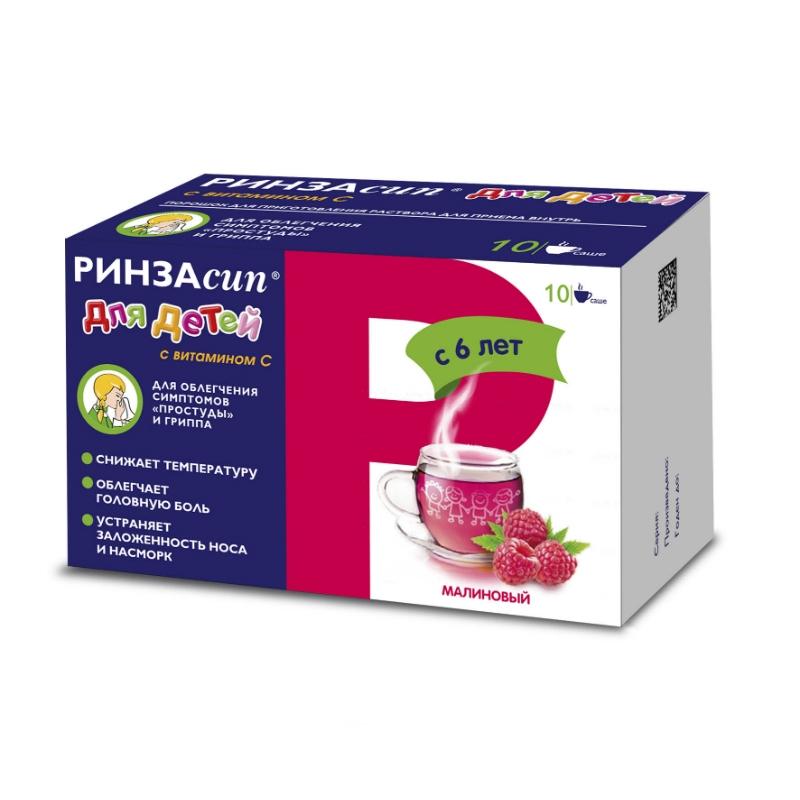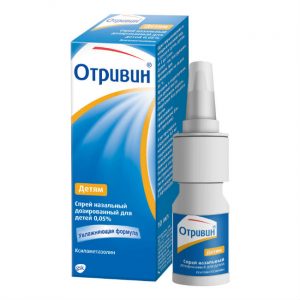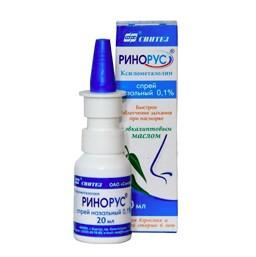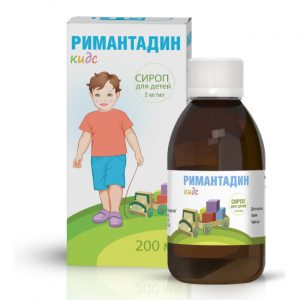Description
Latin name
Rinzasip
Release form
Rinzasip. The powder for the preparation of a solution for oral administration is granular, from light pink to pink, with white and dark pink spots.
Packaging
3 g – sachets (10) – packs of cardboard.
Pharmacological action
Rinzasip is a combined drug used for colds.
Paracetamol – an analgesic-antipyretic, reduces the pain syndrome observed with colds – sore throat, headache, muscle and joint pain, reduces high body temperature.
Pheniramine – a blocker of histamine H1 receptors, It has an anti-allergic effect: it eliminates itching (including the eyes, nose), swelling and hyperemia of the mucous membranes of the nasal cavity, nasopharynx and sinuses, and reduces the effects of exudation.
Ascorbic acid is involved in the regulation of redox processes, carbohydrate metabolism, blood coagulation, tissue regeneration, in the synthesis of steroid hormones, reduces vascular permeability, reduces the need for vitamins B1, B2, A, E, folic acid, pantothenic acid. Improves the tolerance of paracetamol and lengthens its effect (associated with an extension of T1 / 2).
Indications
ARVI (symptomatic therapy)
allergic rhinitis
rhinopharyngitis
pain syndrome (mild to moderate): arthralgia, myalgia, neuralgia, migraine, toothache and headache, algalismenorrhea.
Contraindications
hypersensitivity
portal hypertension
alcoholism
pregnancy (I and III trimesters)
lactation.
With caution: congenital hyperbilirubinemia (Gilbert, Dubin-Johnson and Rotor syndromes), children’s age (up to 15 years – for a dosage form intended for adults), children’s age (up to 6 years for a children’s dosage form), angle-closure glaucoma, prostatic hyperplasia, renal failure, glucose-6-phosphate dehydrogenase deficiency.
Use during pregnancy and lactation
Contraindications: pregnancy (I and III trimesters) lactation.
Composition
Active ingredients:
ascorbic acid 100 mg
paracetamol 280 mg
pheniramine maleate 10 mg
Excipients:
aspartame 35 mg,
acesulfame potassium 23 mg,
magnesium citrate 105 mg,
sucrose 71rd mg 2361.7 mg
dye azorubine 4 mg.
Dosage and administration of
For children (children s dosage form) 6-10 years old – 1 pack. 2 times / day, 10-12 years – 1 pack. 3 times / day, 12-15 years – 1 pack. 4 times / day
Interval between doses – at least 4 hours
In chronic renal failure (CC 10 ml / min) the interval between doses – 8 hours
Side effects
Allergic reactions (skin rash, itching, urticaria, angioedema), nausea, epigastric pain anemia, thrombocytopenia, dry mouth, paresis of accommodation, urinary retention, drowsiness.
With prolonged use in large doses – hepatotoxic effect, hemolytic anemia, aplastic anemia, methemoglobinemia, pancytopenia, erosive and ulcerative lesions of the gastrointestinal tract, bleeding in the gastrointestinal tract nephrotoxicity (papillary necrosis).
Drug Interaction
Ethanol enhances the sedation of antihistamines.
Antidepressants, antiparkinsonian, antipsychotic medicines (phenothiazine derivatives) increase the risk of side effects (urinary retention, dry mouth, constipation).
ACS increase the risk of developing glaucoma.
Inductors of microsomal oxidation (phenytoin, ethanol, barbiturates, rifampicin, phenylbutazone, tricyclic antidepressants) increase the production of hydroxylated active metabolites, increasing the risk of severe intoxication with small overdoses.
Microsomal oxidation inhibitors (cimetidine) reduce the risk of hepatotoxic action.
Paracetamol reduces the effectiveness of uricosuric drugs.
overdose
Symptoms (caused by paracetamol): pallor of the skin, decreased appetite, nausea, vomiting, hepatonecrosis (the severity of necrosis due to intoxication depends directly on the degree of overdose).
Toxic effect in adults is possible after ingestion of more than 10-15 g of paracetamol: increased activity of hepatic transaminases, increase of prothrombin time (12-48 h after admission) detailed clinical picture of liver damage manifests itself in 1-6 days. Rarely, liver failure develops rapidly and may be complicated by renal failure (tubular necrosis).
Treatment: in the first 6 hours after overdose – gastric lavage, introduction of donors of SH-groups and precursors of synthesis of glutathione – methionine in 8-9 h after an overdose and N-acetylcysteine after 12 h.
blood, as well as the time elapsed after its ingestion.
Storage conditions
In a dry, dark place at a temperature of no higher than 25 ° C.
The Expiration of
is 3 years.
Deystvuyuschee substances
Paracetamol, phenylephrine, Ascorbic acid
form Dosage form
solution for oral administration
Unique Pharmaceutical, India




